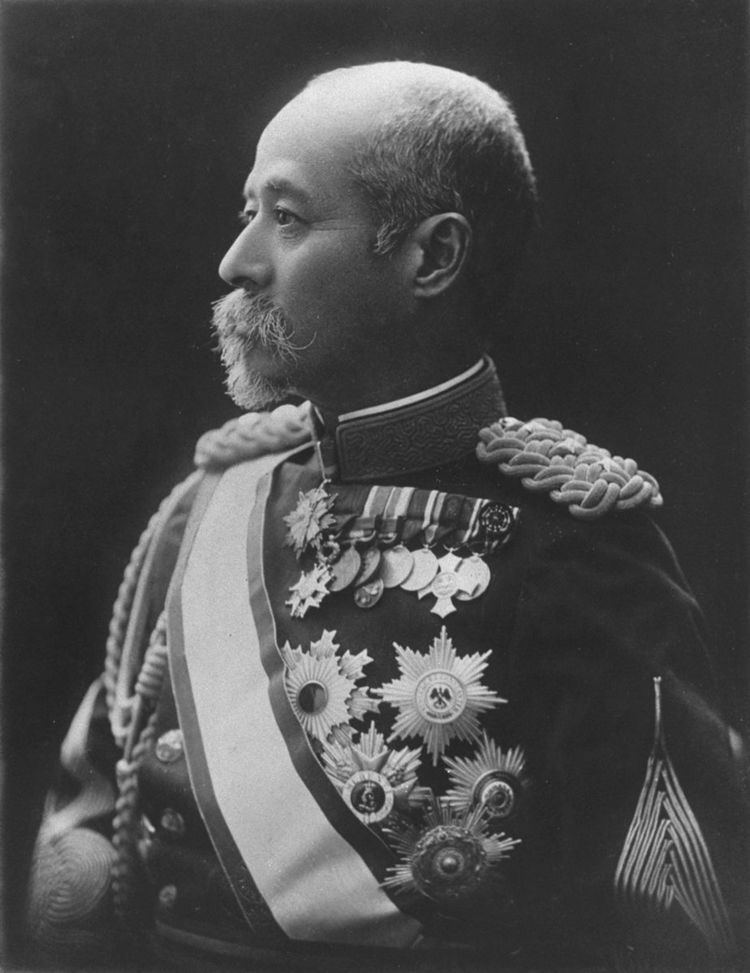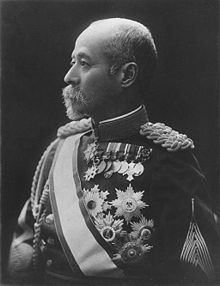Years of service 1868 - 1906 Name Kodama Gentaro | Rank General | |
 | ||
Battles/wars Boshin WarSaga rebellionShinpuren RebellionSatsuma RebellionFirst Sino-Japanese WarRusso-Japanese War | ||
Viscount Kodama Gentarō (兒玉 源太郎, 16 March 1852 – 23 July 1906) was a general in the Imperial Japanese Army, and government minister during Meiji period Japan. He was instrumental in establishing the modern Imperial Japanese military.
Contents
Early life

Born in Tokuyama, Suō Province (modern Yamaguchi Prefecture), from a samurai class family loyal to the Chōshū domain, Kodama began his military career fighting in the Boshin War for the Meiji Restoration against the forces of the Tokugawa shogunate in 1868. He was appointed a non-commissioned officer on 2 June 1870, advanced to sergeant major on 10 December and promoted to warrant officer on 15 April 1871; he was commissioned a second lieutenant on 6 August and promoted to lieutenant on 21 September. He was promoted to captain on 25 July 1872 and to major on 19 October 1874.
As a soldier in the fledgling Imperial Japanese Army, he saw combat during the suppression of the Satsuma Rebellion. He later enrolled in the Osaka Heigakuryo (大阪兵学寮) military training school). Successive and rapid promotions followed: lieutenant-colonel on 30 April 1880, colonel on 6 February 1883 and major-general on 24 August 1889.
Military career
Kodama was appointed head of the Army Staff College, where he worked with German Major Jakob Meckel to reorganize the modern Japanese military after the Prussian system.
Kodama went on to study military science as a military attaché to Germany. After his return to Japan, he was appointed Vice-minister of War in 1892.
After his service in the Sino-Japanese War (1894-5), Kodama became Governor-General of Taiwan. During his tenure, he did much to improve on the infrastructure of Taiwan and to alleviate the living conditions of the inhabitants. He was promoted to lieutenant general on 14 October 1896. Having proved himself an excellent administrator, Kodama spent the following decade serving as Minister of the Army under Prime Minister Itō Hirobumi, retaining the post and taking on the concurrent roles of Minister of Home Affairs and Education under the following Prime Minister Katsura Tarō.
On 6 June 1904, Kodama was promoted to full general. However, he was asked by Marshal Ōyama Iwao to be Chief of General Staff of the Manchurian Army during the Russo-Japanese War. This was a step down for him in terms of rank, but he nevertheless chose to take the position; it was a sacrifice which elicited much public applause. Throughout the Russo-Japanese War he guided the strategy of the whole campaign, as General Kawakami Sōroku had done in the First Sino-Japanese War ten years previously. The postwar historian Shiba Ryōtarō gives him complete credit for Japan's victory at the Siege of Port Arthur, although there is no historical evidence for this, and Kodama kept quiet about his role in the battle. Following the war, he was named Chief of the Imperial Japanese Army General Staff, but he died soon afterwards.
Kodama was raised in rapid succession to the ranks of danshaku (baron) and shishaku (viscount) under the kazoku peerage system, and his death in 1906 of a cerebral hemorrhage was regarded as a national calamity. Following a petition by Kodama's son, Hideo, the Meiji Emperor elevated Hideo to the title of hakushaku (count). Kodama later received the ultimate honor of being raised to the ranks of Shinto kami; shrines to his honor still exist at his home town in Shūnan, Yamaguchi Prefecture, and on the site of his summer home on Enoshima, Fujisawa, Kanagawa Prefecture.
Honours
With information from the corresponding article in the Japanese Wikipedia
Order of precedence
On film
The actor Tetsurō Tamba portrayed Gentarō in the 1980 Japanese war drama film The Battle of Port Arthur (sometimes referred as 203 Kochi). Directed by Toshio Masuda the film depicted the Siege of Port Arthur during the Russo-Japanese War and starred Tamba as General Gentarō, Tatsuya Nakadai as General Nogi Maresuke and Toshirō Mifune as Emperor Meiji.
